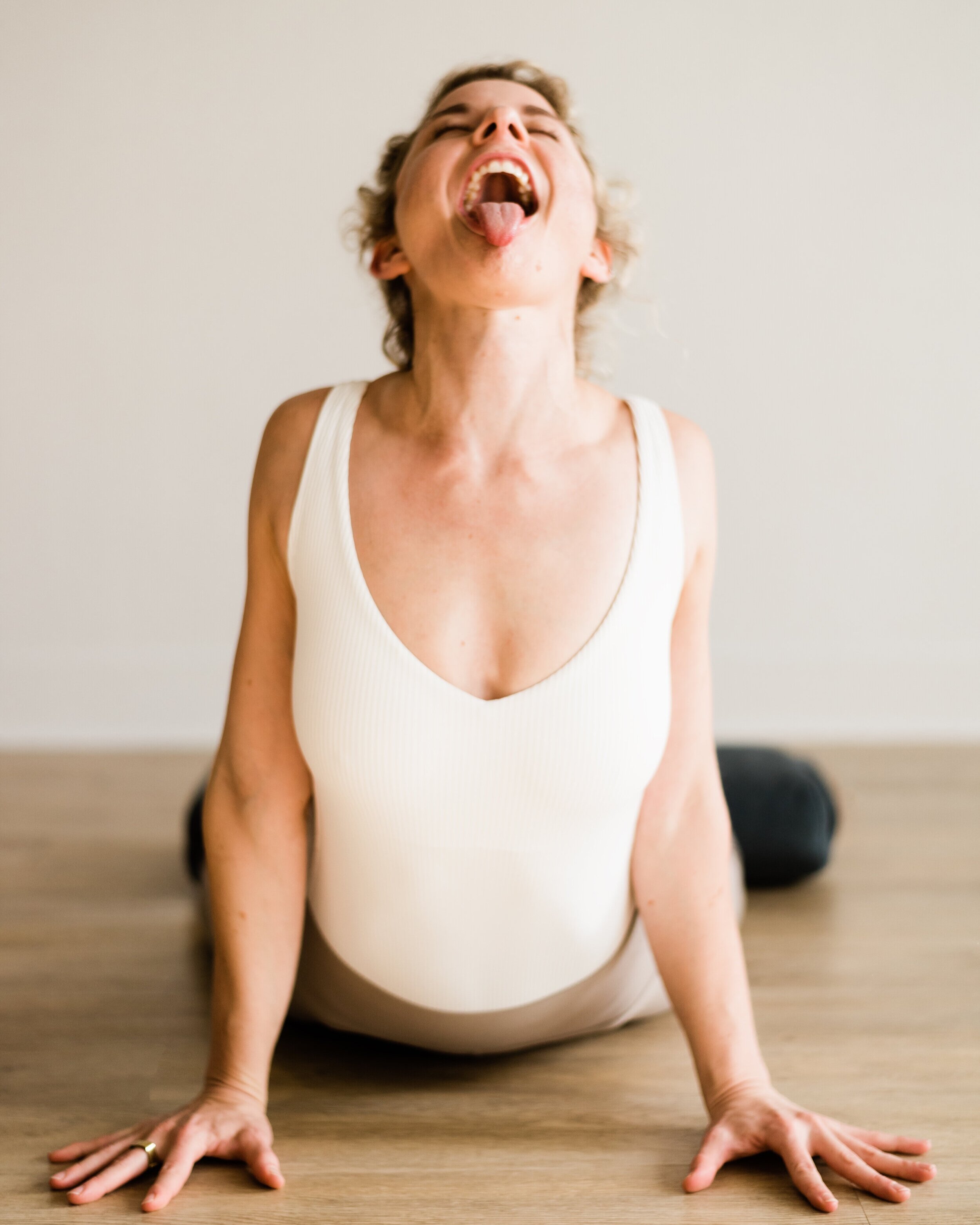Lion's Breath
Lion’s Breath
by LILA TAFF
Image cred: @alinajack
Simhasana (lion pose) is, according to the Haṭha Yoga Pradīpikā, “useful for alleviating numerous throat, mouth, nose, and even ear diseases . . . . [I]t also helps to externalize introverted people.” Let’s have a look.
The Haṭha Yoga Pradīpikā (HYP), is a classic Sanskrit text written by Svātmārāma in the fifteenth century that covers yoga practice, including asana (the physical practice) and pranayama (the breath practice), and is one of the most influential texts on yoga today. The HYP classifies Simhasana as an asana (a pose), rather than a pranayama (breath practice). So, while we typically call it lion’s breath and apply it to many asanas, which I will speak to more, it is described in the HYP yoga manual as one of the four most important of the 84 asanas, particularly cherished for its activation of mula bandha, uddiyana bandha, and jalandhara bandha, together.
TRY IT OUT
To get the gist of the practice, from right where you are, sit up tall in your spine and bring your hands to your thighs. Spread your fingers and slide the hands towards the knees. Inhale through the nose, engage mula bandha (lift up at the perineum), uddiyana bandha (suck the navel in and up toward ribs), and jalandhara bandha (lift chest, draw chin down and back). On the exhale, reach the tongue out from the root and roll the dṛiṣṭi (the gaze) up and toward the ajna chakra (between and behind the brows), as you release an aspirant exhale through the mouth.
USE LION’S BREATH IN YOUR YOGA CLASS AS A “RELEASE VALVE”
Now, think of a point in a yoga class where you are at your edge, you are in a tense situation with a particular pose or a nagging thought. In either case, the mind has become loud. Are you breathing? When you notice the mind has turned up in the face of resistance and you are no longer connected well to the body, bring yourself back with breath. When you are feeling heat or pressure or an unwanted emotion building, give it somewhere to go. I encourage you to offer up a “lion’s breath” (eyeballs up and tip of the tongue down with an aspirant exhale) in any pose to refocus your attention to the present and to give the feeling and the thoughts an outlet—I like to say “open the release valve” and will encourage students to make the release authentic to them and what they’re releasing by giving it a sound, stretching the mouth, and layering in any form of expression that supports the purification.
USE LION’S BREATH IN YOUR DAILY LIFE TO RECLAIM YOUR POWER
This practice can come in handy off the mat, too. Consider when you are sitting in meditation, or otherwise living life, and thoughts and emotions that are unwanted or unhelpful are having their way with your attention. How much of your sphere, your personal domain, are you allowing to be taken up by unwanted energy? It’s okay; you can create an expansion practice to get you back on the path, moving toward what you want. Just use the tools you have to reclaim your energetic sphere and your power.
When you notice that you are feeling collapsed or in some way contracted (reacting or disempowered), a few intense rounds of lion’s breath can be an effective catharsis that not only helps you purify your personal sphere, but also can create an empowering shift as you allow yourself to become big and to look silly at once. The lion represents courage, and the root word of courage is heart. Practicing this pranayama can help you stay open when you want to close, when you want to shut down, when your default reaction is to shrink and hide.
It’s not just for introverts, it’s for anyone who could benefit from clearing out some space, stepping into it, and owning it.
Practice with Lila on the Metta Livestream, Sundays at 11 AM Pacific! Follow Lila on instagram @eltaff or facebook @eltaffstudio or visit her website eltaff.com/yoga
© 2020 Metta Yoga LLC


